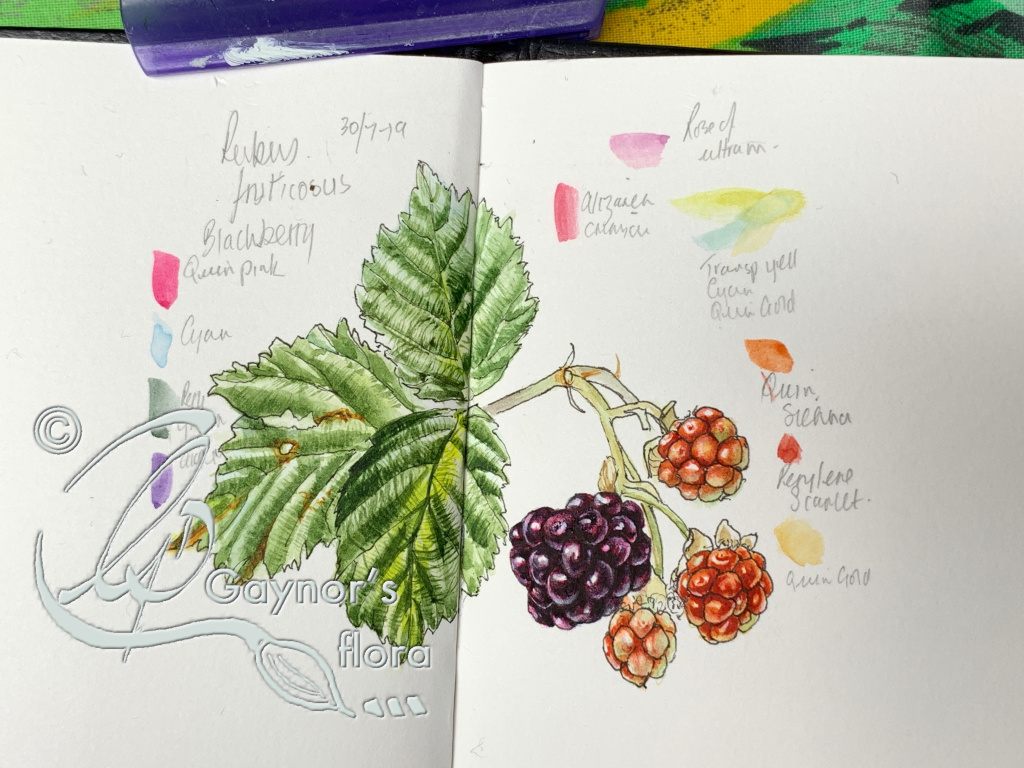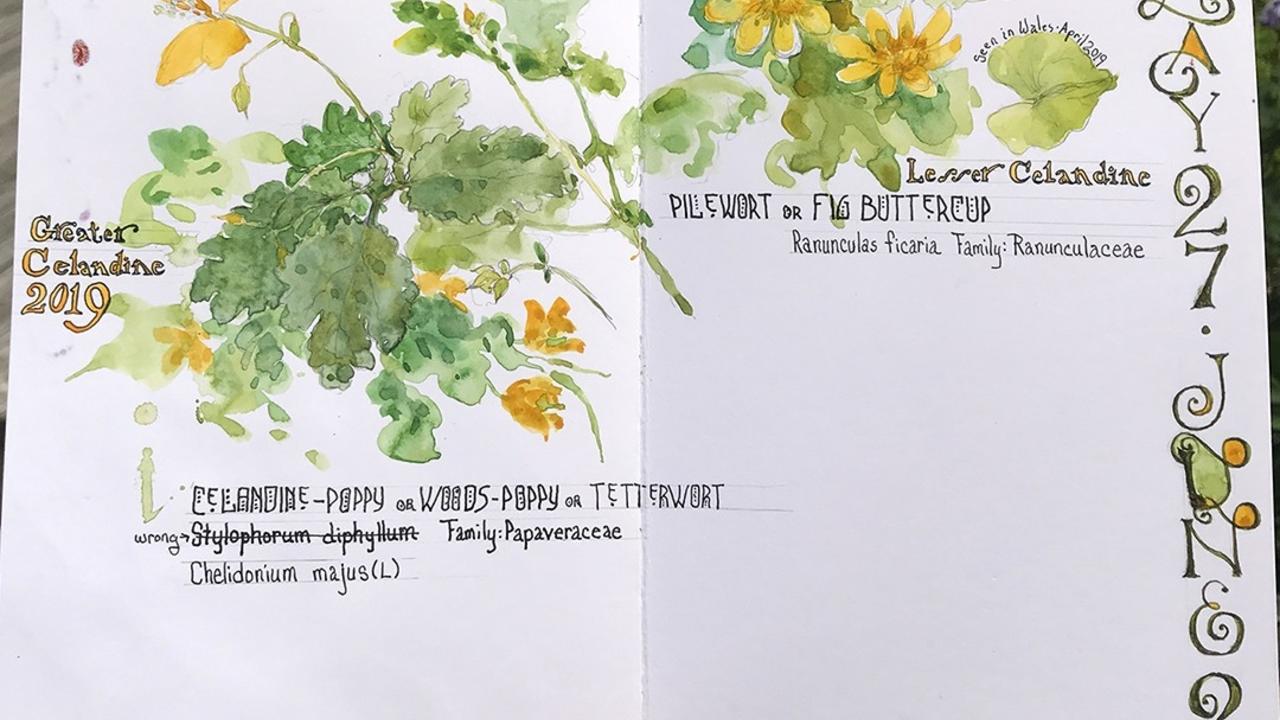I’ve read about artists, especially botanical artists, that take years to finish a work of art, not because they were just super slow, but because they had to wait. What did they have to wait for? Nature.
These artists would focus on a particular plant while it was in bloom or its fruit was ripe, or it was at some other particular stage in its yearly cycle that they wanted to portray. Then, when the blooms faded, the fruit was gone, or the plant had moved on to another stage, that painting and its associated sketches were put away until the same time the next year, when the artist would retrieve the painting and materials associated with it, and continue to work on that project. These artists could have quite a few paintings at various stages of progress at any time.
Why didn’t they just take some pictures with a camera, and work from the photos? There are at least two reasons. One reason is that cameras are a relatively recent invention, and were not particularly helpful to artists and scientists before the last half of the twentieth century. Even after cameras became more available, they weren’t able to produce sharp, detailed, color pictures until very recently. Just think about textbooks and nature guides, or better yet, flip through some. Publishers depended on the skills of technical artists and scientific illustrators to portray detailed illustrations for textbooks, nature guides, medical manuals, etc. The artists could provide detail that cameras could not. An artist’s illustration also has an ‘aliveness’ and attracts the eye in a way that can be much harder to capture in a photo.
The second reason is that artistic tradition frowns on the use of photography or published pictures when it is possible to use live subjects. Botanic artists prefer to be able to touch and manipulate the plants they draw. Being able to turn and examine the object from every angle allows for artistic license while still maintaining scientific accuracy. Scientific illustrators also prefer to rely on real subjects when possible, even if they are preserved animals stored in museums. Artists have often discovered details about animals that had been overlooked by scientists and were not visible in photos.
Recently I have learned of modern artists that do something very similar to the botanic artists I read about, except not so formal. They have also given their practice a name – perpetual journaling.
No, it does not mean that these people are walking around with a pen in one hand and journal in the other, journaling constantly. It means they are setting their sketch journals up in a particular way, so that they return to the same pages during the same calendar week each year. Each two page spread is dated for a seven day period, such as June 1-7, for example. The next spread would be dated for the next week.
Each time the artist goes out to sketch, he/she goes to the pages with the current week’s date on them, and finds a spot to draw. Next to the sketch will be added any notes, and the current date with the year included will complete the day’s drawing.
The first time I encountered the concept of the perpetual journal was when watching the recording of a webinar presented by the University of Virginia. The speaker for that presentation was Laura Call Gastinger. She explained what a perpetual nature journal is, and showed pages from hers. Her work is amazing!
Here is that video:
Another artist, Kristin Link, wrote an article about Laura and the benefits of keeping a perpetual journal.
Here is another artist, Charlene Collins Freeman, describing what a perpetual journal is.
Chris Carter started a perpetual plant journal after her friend, Jill Richards, showed her one. Here is a page from her journal:
A perpetual journal doesn’t have to be fancy or expensive. A hardback sketchbook would offer a hard surface, which would make sketching in the field easier. But any sketchbook will do. A couple of pencils and a sharpener in a ziplock baggie will be useful for times when the leads break. Maybe add a mechanical pencil to the kit. Although many art teachers say avoid using erasers, I keep one handy. That would be all an artistic adventurer would need for the most basic of field kits. Something to draw with and something to draw on. Plus a messenger bag to put the supplies in. More supplies can be added as preferences are decided – an artist pen, a small watercolor set and water brushes, colored pencils. The trick and challenge is to keep it compact and light. If your art field bag gets too heavy and bulky, you’ll be tempted to leave it behind. If you don’t take it with you, you can’t field sketch in it. If you want to have some colored pencils, that’s great. Take a handful you’re sure you’ll use, not the entire 120 pencil set (or however many you have). You can always add to your sketch when you get back home. That’s why you take notes.
The idea of a perpetual journal relieves some of the pressure to fill the entire page. The drawing can be as large or as small as the artist wants or time allows. The idea is to have space left for future drawings.
One thing I noticed as I learned about perpetual journals is that people who have been been keeping them for a long time have noticed how the plants are being effected by climate change. Sprouting, blooming, and fruiting seasons are shifting to be a bit earlier each year.
I wonder what else we could learn from maintaining perpetual nature journals…
Resources:
UVA Behind the Scenes: Laura Call Gastinger
Charlene Collins Freeman Art: Perpetual Nature Journal






Leave A Comment